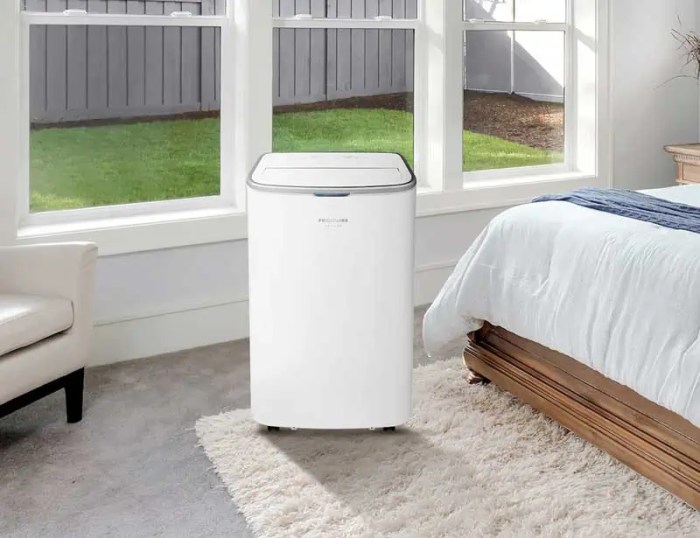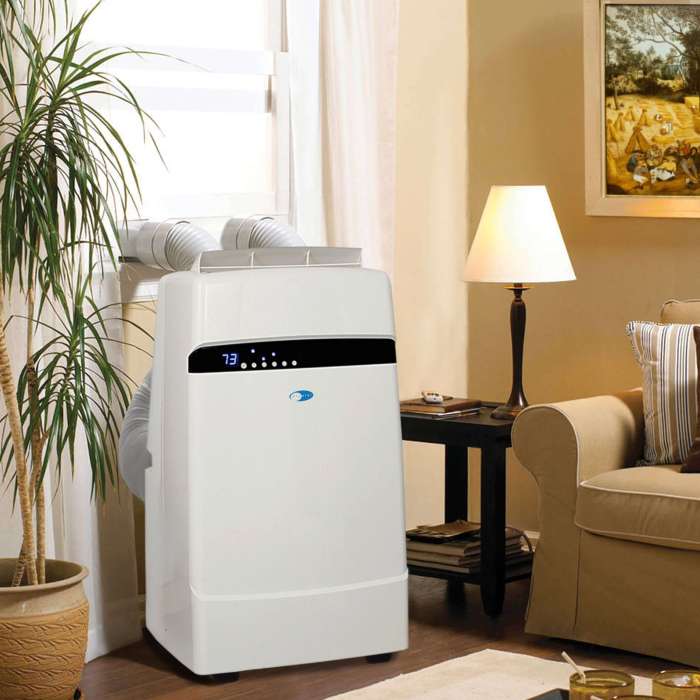Best Budget-Friendly Air Conditioner Units for Families: A Comprehensive Guide
Best Budget-Friendly Air Conditioner Units for Families sets the stage for this enthralling narrative, offering readers a glimpse into a story that is rich in detail and brimming with originality from the outset.
As we delve into the realm of budget-friendly air conditioners, we uncover essential factors, from sizing and capacity to energy efficiency and cost savings, ensuring families make informed decisions for their cooling needs.
Researching Budget-Friendly Air Conditioners
When looking for a budget-friendly air conditioner, there are several factors to consider to ensure you get the best value for your money. It’s important to look at the key features that make an air conditioner budget-friendly, as well as compare the different types available in the market.
Factors to Consider when Selecting a Budget-Friendly Air Conditioner
- Energy Efficiency: Look for an air conditioner with a high Energy Efficiency Ratio (EER) to ensure lower energy consumption and reduced electricity bills.
- Size and Cooling Capacity: Choose an air conditioner that is the right size for the room you intend to cool, as an oversized or undersized unit can lead to inefficiency.
- Price and Maintenance Costs: Consider the initial purchase price as well as long-term maintenance costs to stay within your budget.
- Noise Level: Check the decibel rating to ensure the air conditioner operates quietly, especially if it will be placed in a bedroom or living room.
Key Features of Budget-Friendly Air Conditioners
- Basic Functions: Budget-friendly air conditioners typically offer essential functions like cooling and fan modes without additional advanced features.
- Simple Design: These units often have a straightforward design with easy-to-use controls, making them user-friendly for all members of the family.
- Affordable Price: The most important feature of budget-friendly air conditioners is their affordability, providing effective cooling without breaking the bank.
Comparison of Different Types of Budget-Friendly Air Conditioners
- Window Air Conditioners: These units are typically more affordable upfront and easy to install in most windows, making them a popular choice for budget-conscious families.
- Portable Air Conditioners: While slightly more expensive, portable units offer the flexibility to move them from room to room, providing cooling where needed without the need for permanent installation.
- Ductless Mini-Split Systems: Although a bit pricier, ductless systems offer energy-efficient cooling and the ability to control temperatures in individual rooms, potentially saving money in the long run.
Sizing and Capacity
Choosing the right size and capacity of an air conditioner is crucial for optimal cooling in a family setting. A unit that is too small will struggle to cool the room efficiently, while one that is too large may cycle on and off frequently, leading to energy waste and uneven cooling.
Calculating Cooling Capacity
To calculate the appropriate cooling capacity needed for a family room, you can use the following formula:
(Room Length x Room Width) x 25 = Required Cooling Capacity in BTUs
- Measure the length and width of the room in feet.
- Multiply the length by the width to get the square footage of the room.
- Apply the formula to determine the required cooling capacity in British Thermal Units (BTUs).
Matching Air Conditioner Size with Room Dimensions
When selecting an air conditioner, ensure that the unit’s cooling capacity matches the square footage of the room. Here are some tips to match the size of the air conditioner with the room dimensions:
- For rooms up to 150 square feet, a unit with 5,000-6,000 BTUs is sufficient.
- Rooms between 150-350 square feet may require 7,000-8,200 BTUs.
- Rooms between 350-550 square feet typically need 9,800-12,500 BTUs.
- For larger rooms or open layouts, consider multiple units or a central air system.
- Ensure proper installation to maximize efficiency and cooling performance.
Energy Efficiency and Cost Savings

Energy efficiency plays a crucial role in budget-friendly air conditioners as it directly impacts the operating costs of the unit. By choosing an energy-efficient model, families can save money on their electricity bills while also reducing their carbon footprint.
Maximizing Cost Savings
- Set the temperature to an optimal level: By setting the thermostat to a comfortable yet energy-saving temperature, you can reduce the workload on the air conditioner and save on energy costs.
- Utilize programmable settings: Take advantage of programmable settings to adjust the temperature based on your schedule, ensuring that the unit is not running unnecessarily when no one is at home.
- Maintain regular maintenance: Keep the filters clean and ensure proper maintenance to optimize the efficiency of the air conditioner, resulting in lower energy consumption.
Comparison of Energy Efficiency Ratings
| Brand | Model | Energy Efficiency Rating |
|---|---|---|
| Brand A | Model X | Energy Star Certified |
| Brand B | Model Y | SEER 16 |
| Brand C | Model Z | Energy Star Certified |
Installation and Maintenance

When it comes to installing and maintaining budget-friendly air conditioners for families, following proper procedures is essential to ensure optimal performance and longevity of the unit.
Installation Process
- Choose the right location: Select a spot that is away from direct sunlight and heat sources to improve efficiency.
- Secure the unit: Ensure the air conditioner is stable and level to prevent vibrations and noise during operation.
- Proper insulation: Seal any gaps around the unit to prevent air leaks and maintain cooling efficiency.
- Follow manufacturer’s instructions: Carefully read the installation manual and follow the recommended steps for setup.
Maintenance and Cleaning
Regular maintenance and cleaning are crucial in keeping your budget-friendly air conditioner running smoothly. Here’s a step-by-step guide to help you maintain your unit:
- Clean or replace filters: Dirty filters can restrict airflow and reduce efficiency. Clean or replace filters every 1-2 months.
- Clean the coils: Dust and debris can accumulate on the coils, affecting cooling capacity. Use a soft brush or cloth to gently clean the coils.
- Check and clean the vents: Ensure that the vents are not blocked by furniture or other obstructions. Clean the vents regularly to maintain airflow.
- Inspect the thermostat: Check the thermostat settings and replace the batteries if needed to ensure accurate temperature control.
- Schedule professional maintenance: Consider scheduling annual maintenance with a professional technician to inspect and tune-up your air conditioner.
Common Troubleshooting Tips
If you encounter any issues with your budget-friendly air conditioner, here are some common troubleshooting tips to help you address the problem:
- Check the power supply: Ensure the unit is properly plugged in and the circuit breaker is not tripped.
- Adjust the thermostat: Verify that the thermostat is set to the desired temperature and mode (cooling or fan).
- Clear any obstructions: Remove any debris or blockages around the unit that may be affecting airflow.
- Inspect the condensate drain: Make sure the condensate drain is clear to prevent water leakage or overflow.
- Consult the manual: Refer to the user manual for specific troubleshooting steps provided by the manufacturer.
Final Conclusion

In conclusion, Best Budget-Friendly Air Conditioner Units for Families equips readers with the knowledge needed to navigate the world of affordable cooling solutions, making comfort and savings a reality for every household.
Common Queries
What factors should be considered when selecting a budget-friendly air conditioner?
Factors such as energy efficiency, cooling capacity, and upfront costs play a crucial role in choosing the right budget-friendly unit.
How do you calculate the appropriate cooling capacity needed for a family room?
To calculate cooling capacity, measure the room’s square footage and consider factors like insulation and ceiling height for an accurate estimate.
What are some tips for maximizing cost savings with an energy-efficient air conditioner?
Regular maintenance, setting optimal temperatures, and using programmable thermostats can help maximize cost savings with energy-efficient units.
What are common troubleshooting tips for budget-friendly air conditioners?
Issues like clogged filters, refrigerant leaks, or thermostat problems are common troubleshooting areas that can affect budget-friendly air conditioners.